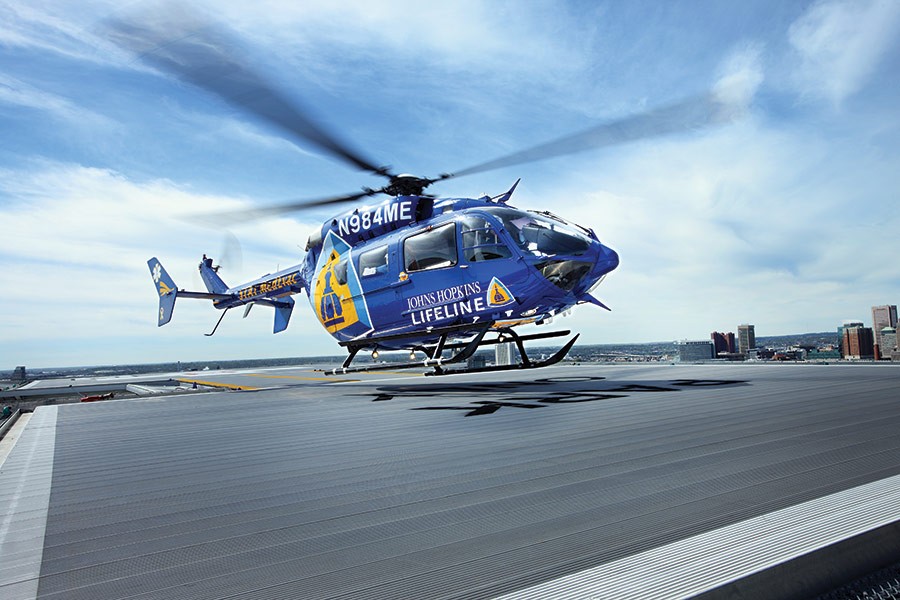Scott Newton, assistant director of nursing and emergency medicine for Johns Hopkins Lifeline and a DNP student in his final year at the School of Nursing:
"Over the past 26 years, I have been a paramedic and RN on ambulances and helicopters, and in several leadership roles developing critical care transport teams. Now, my capstone project at the School of Nursing looks to expedite the transfer of seriously ill patients—victims of heart attacks, strokes, major trauma, surgical vascular emergencies, and other specialized critical care—from community hospitals to tertiary care centers by redesigning the transfer system structure. In essence, I want to create a smooth process and leverage technology to disseminate time-critical information.
"The goal is to reduce the amount of time the entire process takes, because when patients get to tertiary care faster, they get better quicker, experience fewer complications, and stay in the hospital less time. It's better for the patient, their family, the hospitals, and the health care system.
"This evidence-based project started with a systematic review of the literature to identify interventions to improve the system. We visited 10 academic health care systems to identify best practices. We synthesized the literature, combined our observations, and now have a plan to enhance our tertiary care transfer system here at Johns Hopkins.
"The patient transfer process can sometimes be fragmented, ad hoc, and complex. Our process at Johns Hopkins Lifeline has been a national model for over 20 years, but we have an opportunity to optimize it for our patients and our community hospital colleagues. When the call for transfer is received by the Hopkins Access Line, community hospital and Johns Hopkins Hospital physicians are conferenced to discuss clinical needs and accept for transfer. Appropriate beds are assigned, such as a specialty critical care or oncology unit. Our critical care team's helicopters and ambulances bring Hopkins Medicine to the patients in the community hospital and then deliver expert care in transport medicine while en route back to JHH.
"Over the past 20 years, many things have evolved. Hopkins Medicine subspecialty care has increased, communication systems have developed, and the structural parts of our transfer system have grown. Opportunities exist to bring our transfer system components together, to gain efficiencies, accelerate process flow, and update technology.
"The literature is clear: Patients with time-critical diagnosis have improved outcomes when they arrive to tertiary care within defined therapeutic windows. The longer it takes, the sicker they arrive. The more support they need, the longer they stay. The more complications they have, the impact on families is extended. We have an opportunity to enhance patient outcomes from the initial phone call."
Posted in Health








